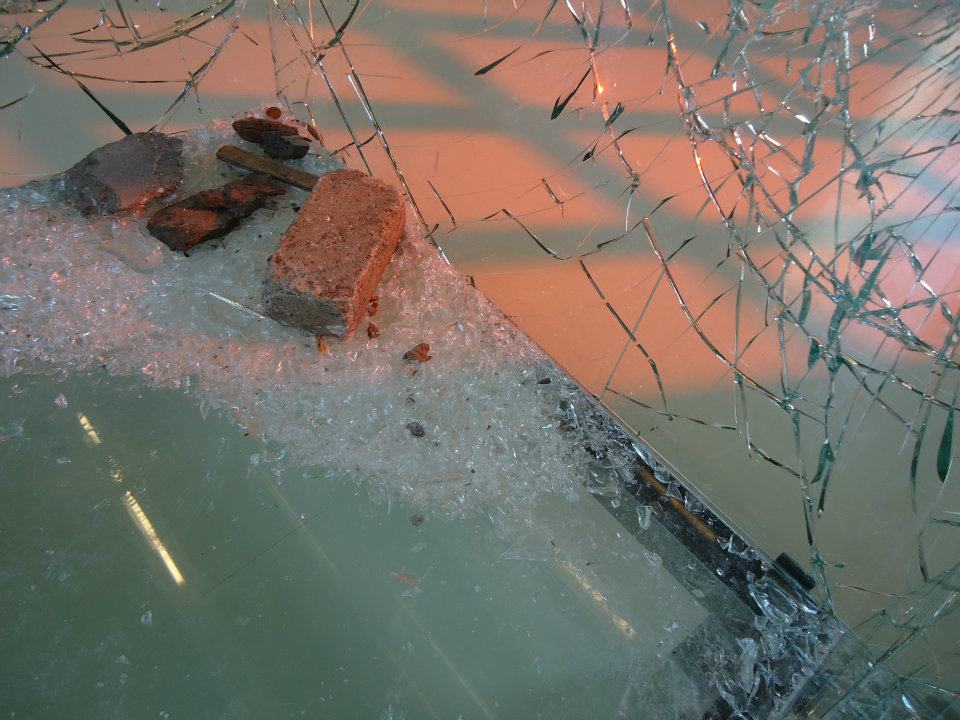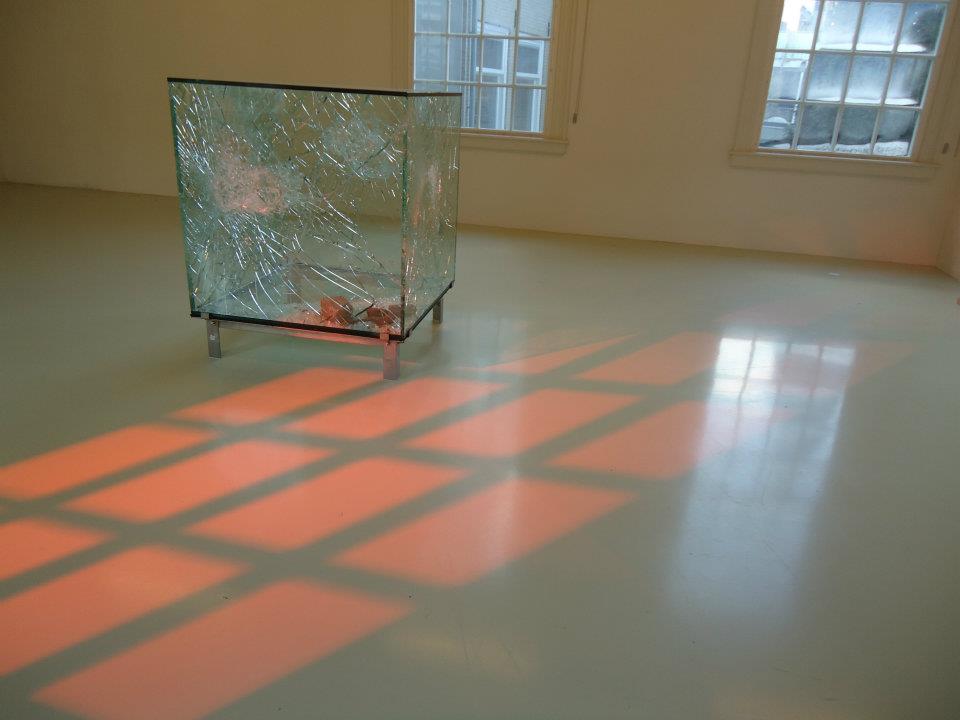
See the Silence Sarah van Sonsbeeck

She is known as an architect of anti-sound and master of disconnection. Sarah van Sonsbeeck portrays silence, and makes us aware of its lack. She is one of the nominees for the Volkskrant Art Prize that is awarded at the Stedelijk Museum Schiedam. The exhibition opens on sunday March 11th.
If you look through the window in Sarah van Sonsbeeck’s studio, what you catch is a partial view of the Museumplein. Well-kept grass, a few tree branches, and the occasional tram passing by with a clanging sound. ‘I mostly look out of my window,’ she tells me. Sarah van Sonsbeeck (b. 1976) was trained as an architect. She was also working as one, until she decided art was her true calling. She started taking evening classes at the Rietveld Academy, where her teachers urged her to put drawing aside and incorporate her work practice into her art. ‘Otherwise they would have flunked me,’ she says. Sarah followed her teachers’ advice, and the result was How My Neighbours Became Buildings (2006), a piece addressing a noise problem in terms of living space and, finally, in terms of monthly rent. By claiming some of her rent back from her loud neighbours, she was not only exploring space but also isolating one of her main obsessions for the coming years: silence. How My Neighbours Became Buildings formed the conceptual framework for the work she would subsequently make, for example during a residency at the Rijksakademie.
Physicality
Some of Van Sonsbeeck’s pieces remind me of artists like Monica Bonvicini or Alberto Garutti, and definitely her attention for negative spaces has inherited something from Rachel Whiteread’s famous sculptures. But her aesthetics are very different, simple and dry: objects, photos, and texts – all clean and minimal, but without coming across as cold. Van Sonsbeeck’s installations have a subtlety to them that makes them poetic, but also a potentially practical rationality that is possibly a heritage from the artist’s architecture days. There is often irony behind a Van Sonsbeeck piece, since its conception might stem from banal daily routines, such as doing dishes. But maintaining such a transparent and personal connection to each piece helps her work feel warmer.
One of the artist’s most iconic pieces is One Cubic Meter of Broken Silence (2009), a glass case originally exhibited in a public space and coincidentally vandalized. Now it looks way more dramatic than it used to, and it works even better. Van Sonsbeeck has represented the same concept (isolating silence, not vandalism) in another piece: a small, vacuum-sealed steel cube, connected to a pair of headphones that allow the listener to experience ‘anti-sound’. Sound – or lack thereof – aside, the artist has also produced architectural pieces, like a 1:1 reproduction of her home – that is, of all the space inside it that remains invisible to the outside gaze. This notion of silence and private space as a primary resource brings us back to the view from her studio window, which also informs her most recent works.
… …
Read the full article in Metropolis M no. 1 – 2012.
Nicola Bozzi is a freelance writer based in Amsterdam/Milan
-
The Volkskrant Art Prize 2012 (group show)
Stedelijk Museum Schiedam
11 March – 17 June - Afterlife: Kunst over de eindbestemming (group show)
Nederlands Uitvaart Museum Tot Zover, Amsterdam
until 1 July
Nicola Bozzi


